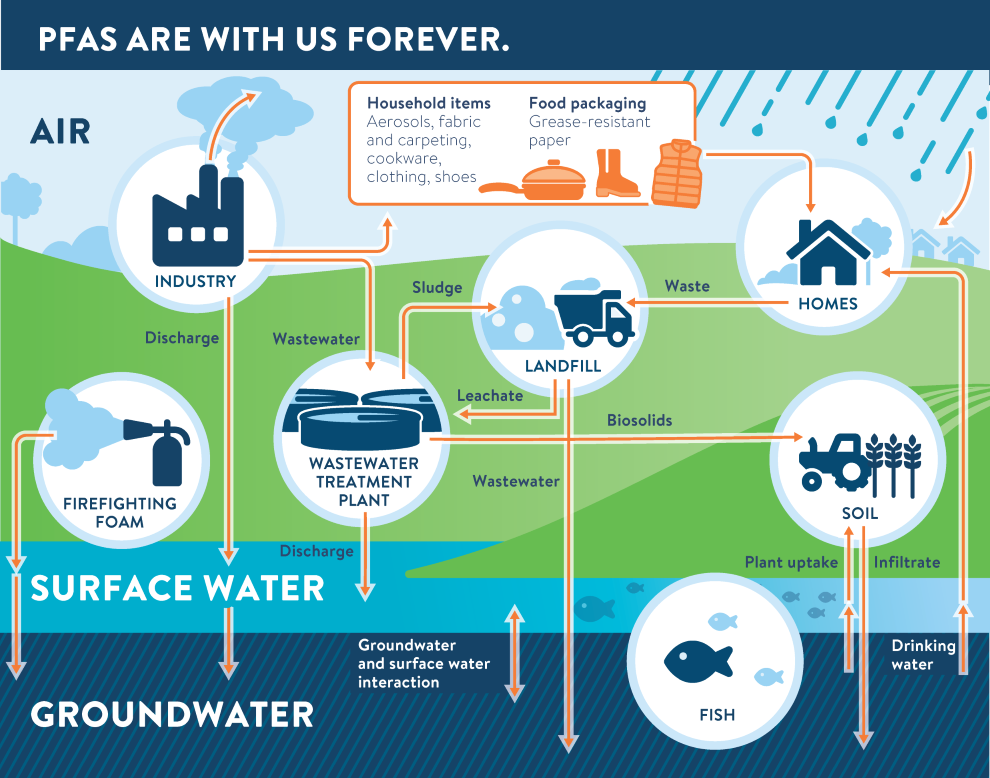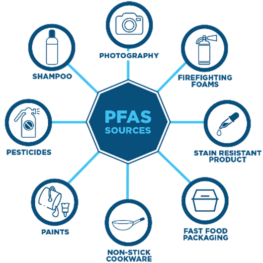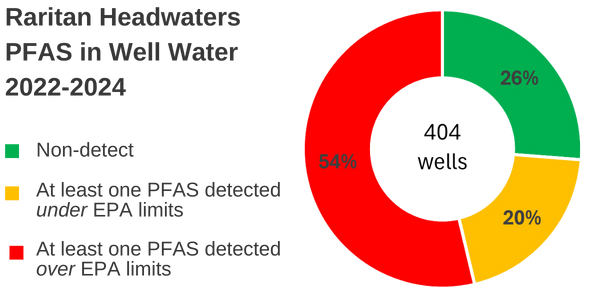What are ‘PFAS’?
Per- and polyfluoroalkyl substances (PFAS) are a class of man-made synthetic compounds that repel both water and oil, and are found in many commercial and consumer products. PFAS are also called ‘forever chemicals’ because of their unique chemical and physical properties which make many of them extremely persistent and mobile in the natural environment.

Where does PFAS come from? What is it used for?
PFAS were first created in 1947 by 3M and were subsequently used for widespread manufacturing of Teflon and other non-stick cookware. PFAS were also used in emergency response training in the form of AFFF (aqueous film fighting foam), which could successfully extinguish fires of flammable liquid, such as gasoline. Due to their stain, oil, and water resistance, they continued to be used in numerous industries and consumer products — everything from textiles and beauty products to pesticides and food packaging.1
How does PFAS exposure occur? Why is PFAS contamination a problem?
The family of PFAS compounds does not break down naturally in the environment and has been shown to accumulate in living things. High levels of PFAS exposure have been linked to numerous cancers and health concerns. More information can be found in the “Health Effects” section of this page.
Humans can be exposed to PFAS chemicals through various sources, including industrial discharge, AFFF application sites, land applications of biosolids, consumer goods usage, ambient/ indoor air, and indoor dust. These sources can then spread into the surrounding environment where exposure can occur through ingestion of food or drinking water from a contaminated source, or inhalation from ambient air or accumulated dust. Contaminated drinking water is a primary source of exposure to PFAS in comparison to other exposure sources. Pregnant women and young children are at the highest risk of exposure.2
If I own a well, should I be concerned about PFAS contamination?
Ongoing research shows that PFAS contamination in groundwater is prevalent and of emerging concern. PFAS data collected from 2022 through 2024 by Raritan Headwaters shows a 54% federal limit exceedance rate in the Upper Raritan Watershed. More information can be found in the “Data” section of this page.
Is PFAS in bottled water?
Companies that sell bottled water in NJ are required to analyze for PFNA, PFOA, and PFAS annually. Currently, they are only required to meet the NJ standards for PFAS.3
In February 2024, the FDA prohibited the sale of food packaging containing PFAS4. This rule applies to all food packaging sold in the United States and aims to eliminate dietary exposure to PFAS.








